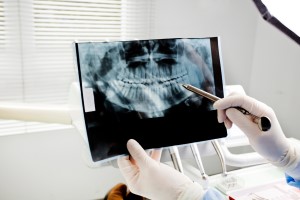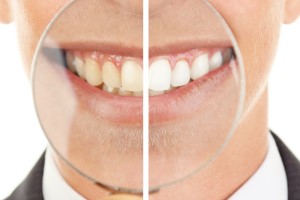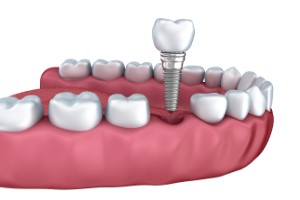Types of Restorative Dentistry

Along with preventive treatments, restorative dentistry is an important facet of dental care. Hopefully, you follow your dentist’s recommendation of visiting the office at least every six months for teeth cleaning and an examination. In between these regular visits, if you have troublesome issues, including pain and discomfort in your teeth, mouth or gums, your dentist can provide relief. There are various treatments available to get your oral health back where you want it and to help you feel and look good.
When to seek treatment
For many patients, it may seem easy to put off a visit to the dentist. It may even be natural for some people to avoid what can be anxiety-filled appointments. However, the right time to go to the dentist to take care of a problem is now. The longer a person waits to fix a dental issue, the more severe the situation could become. It is much smarter to confront the problem immediately and have peace of mind than it is to keep pushing of visits due to fear or nervousness.
Fillings
Arguably the most common type of restorative dentistry, dentists use fillings to repair cavities in a patient’s teeth. The dentist will first numb the patient and will then drill into the affected tooth to clean out all the decay. Today, dentists usually use composite resin to fill in the cavities, though some may offer gold, porcelain or silver amalgam. A composite filling is close to the same color of the tooth, so it is virtually undetectable.
Crowns
For patients with more severe cavities or who have broken teeth, a crown may be the right option. Crowns are made in a lab after the dentist has made an impression of the person’s mouth. At a subsequent appointment, once the dentist has the crown from the lab, the dentist will shave down part of the affected tooth and place a crown or cap over it. This protects the integrity of the tooth and its structure. Caps are usually durable, but the dentist will likely keep a close eye on it over the years to make sure it is firmly in place.
Bridge for restorative dentistry
For missing teeth, a bridge may be the best answer for the patient. This treatment takes care of these gaps and can eliminate embarrassment that the person feels about their smile and appearance. On both ends of the bridge, the dentist places a crown. In between the crowns are artificial teeth. It is designed to allow the person to chew and bite normally. In addition, bridges can also help keep surrounding teeth in the proper places.
Pick what is right
Significant dental issues can cause a lot of stress and anxiety for people that suffer from them. Luckily, there are ways to combat even the most serious problem. If you have broken or missing teeth or if you have painful cavities, inform your dentist without delay. Together, you can discuss treatment options and get back on the road to feeling and looking better.
Request an appointment here: https://jacksonheightdental.com or call 82nd St. Dental at (718) 476-5555 for an appointment in our Jackson Heights office.
Check out what others are saying about our services on Yelp: Read our Yelp reviews.
Recent Posts
Getting the right dental restoration can improve your appearance and dental health. Your dentist will discuss the possible procedures that will fit your needs. Knowing more about these treatments can help you prepare for your next visit. Here are the common dental restoration procedures available.These restorations can be tooth-colored porcelain, gold, or composite material. This…
Dental restoration is a term used to describe the process of repairing or replacing damaged, decayed, or missing teeth. Several dental restoration options are available to patients, ranging from simple fillings to more complex procedures such as dental implants and crowns. This article will explore some of the most common dental restoration options available and…
A root canal removes the infected pulp, then cleans and seals the tooth. Many patients may be unsure if there is anything else they need to do after the root canal. The answer is yes; they will need a dental restoration to restore the tooth's functionality. Let us dive into why leaving a treated tooth…
A dental restoration can stop the progress of dental problems from decay or injury. Dental fillings can treat mild to moderate cavities. Your dentist will assess your teeth and see how many need fillings. Here are the things to expect before you get this dental restoration.The dentist will examine the patient’s teeth and see how…






